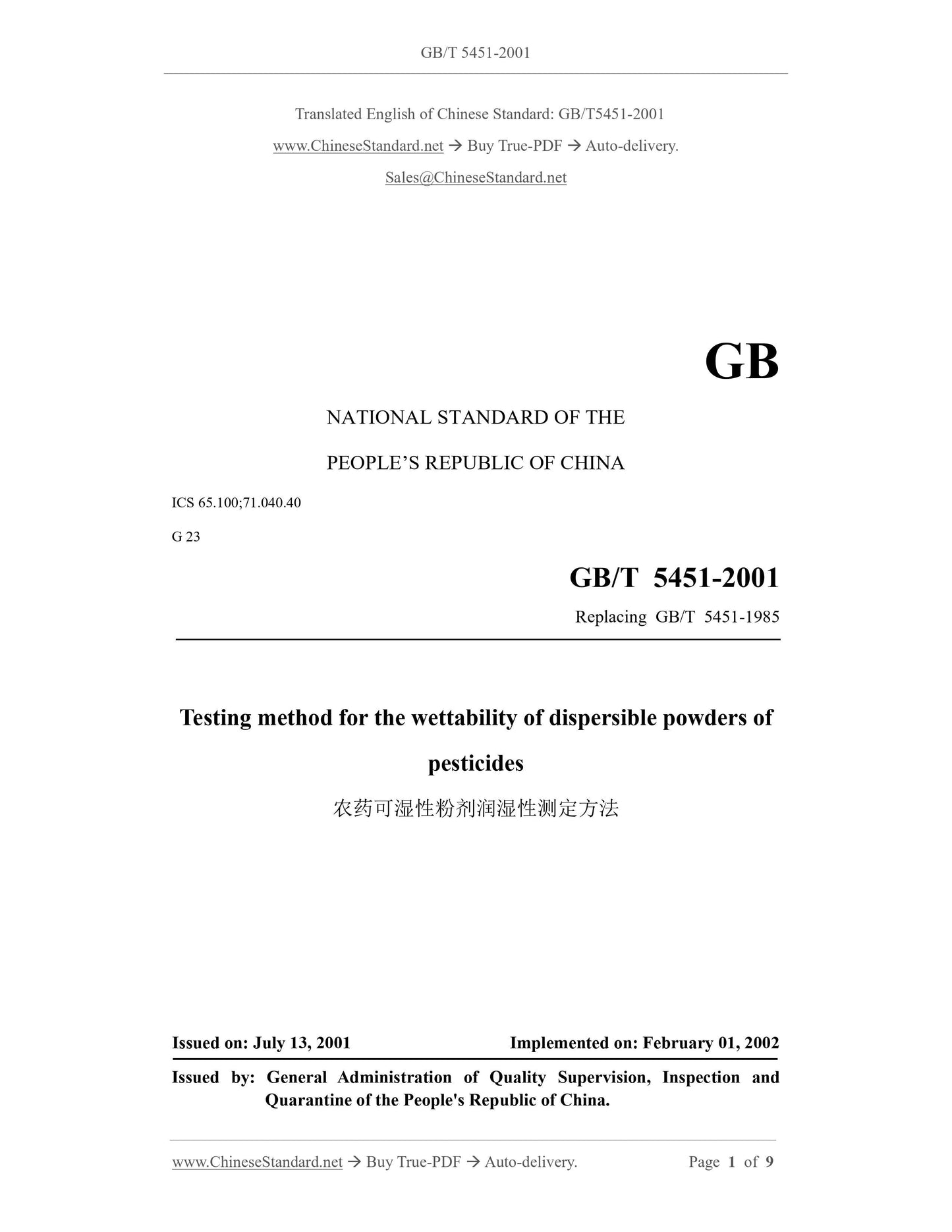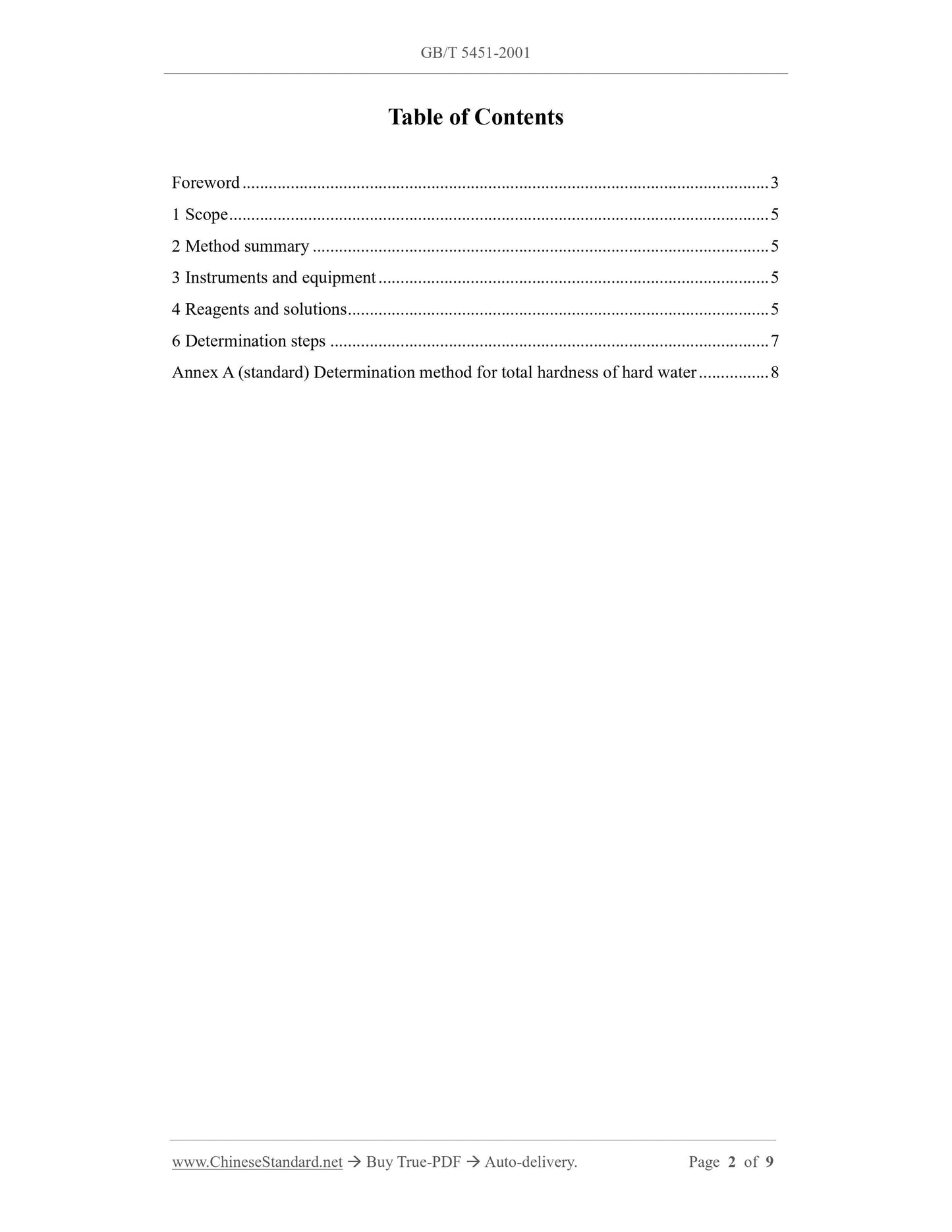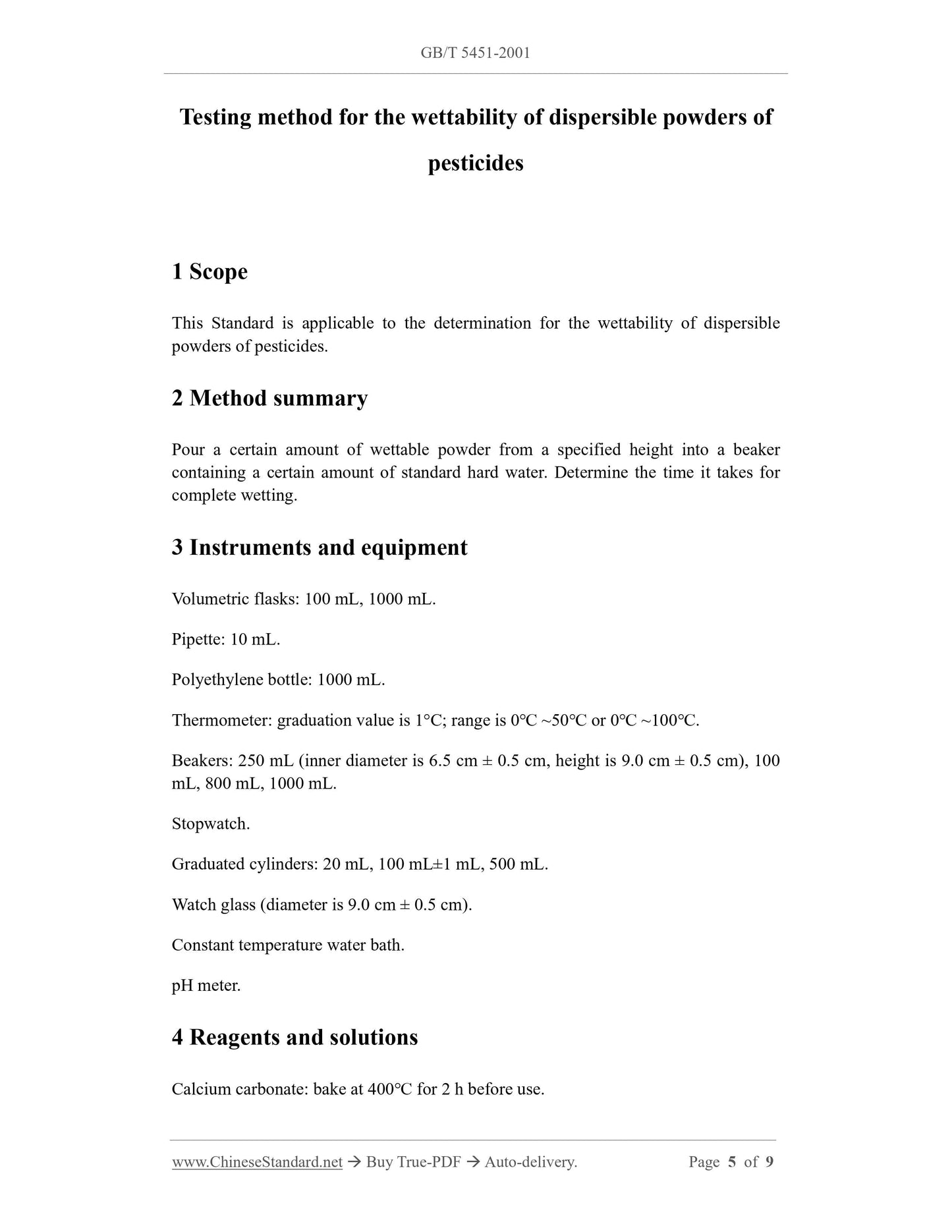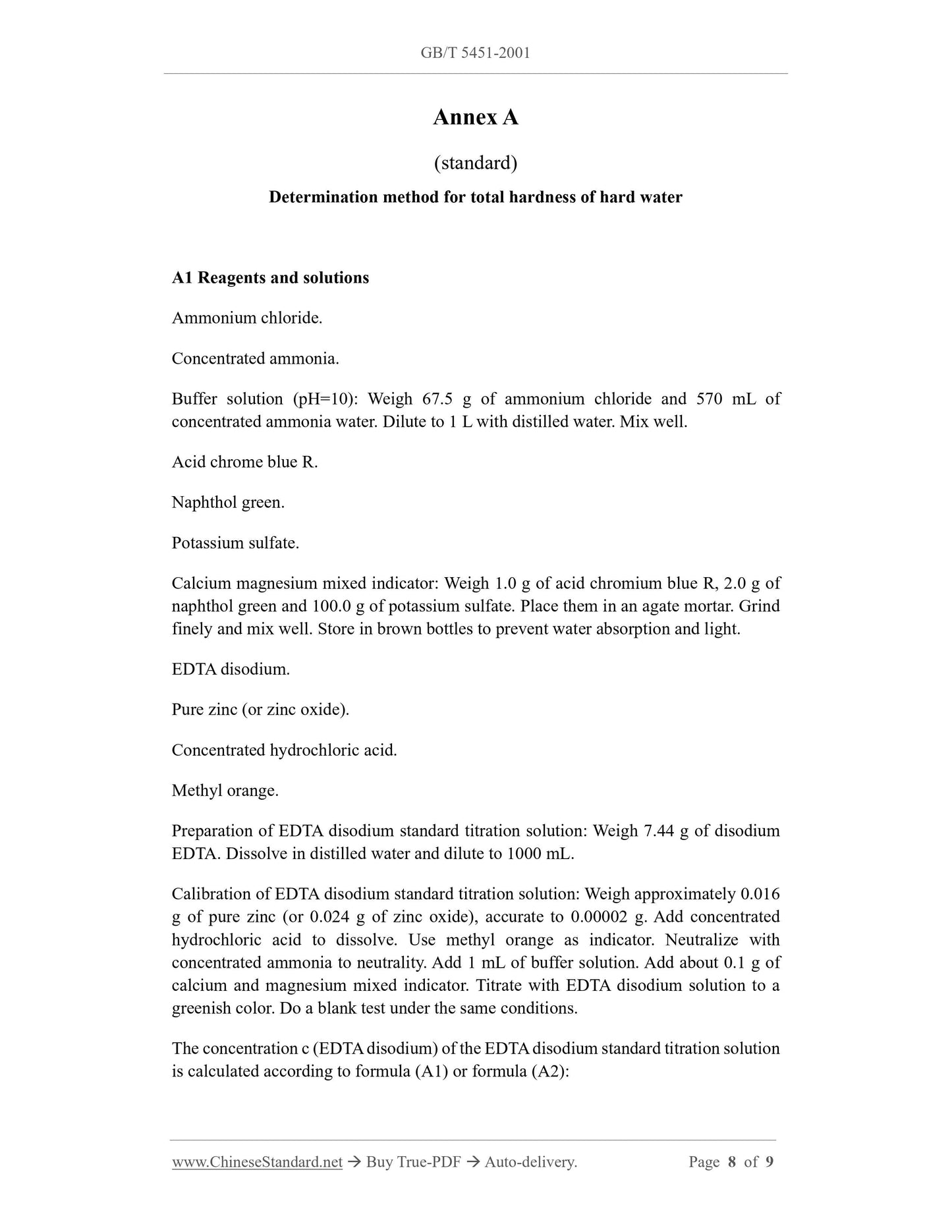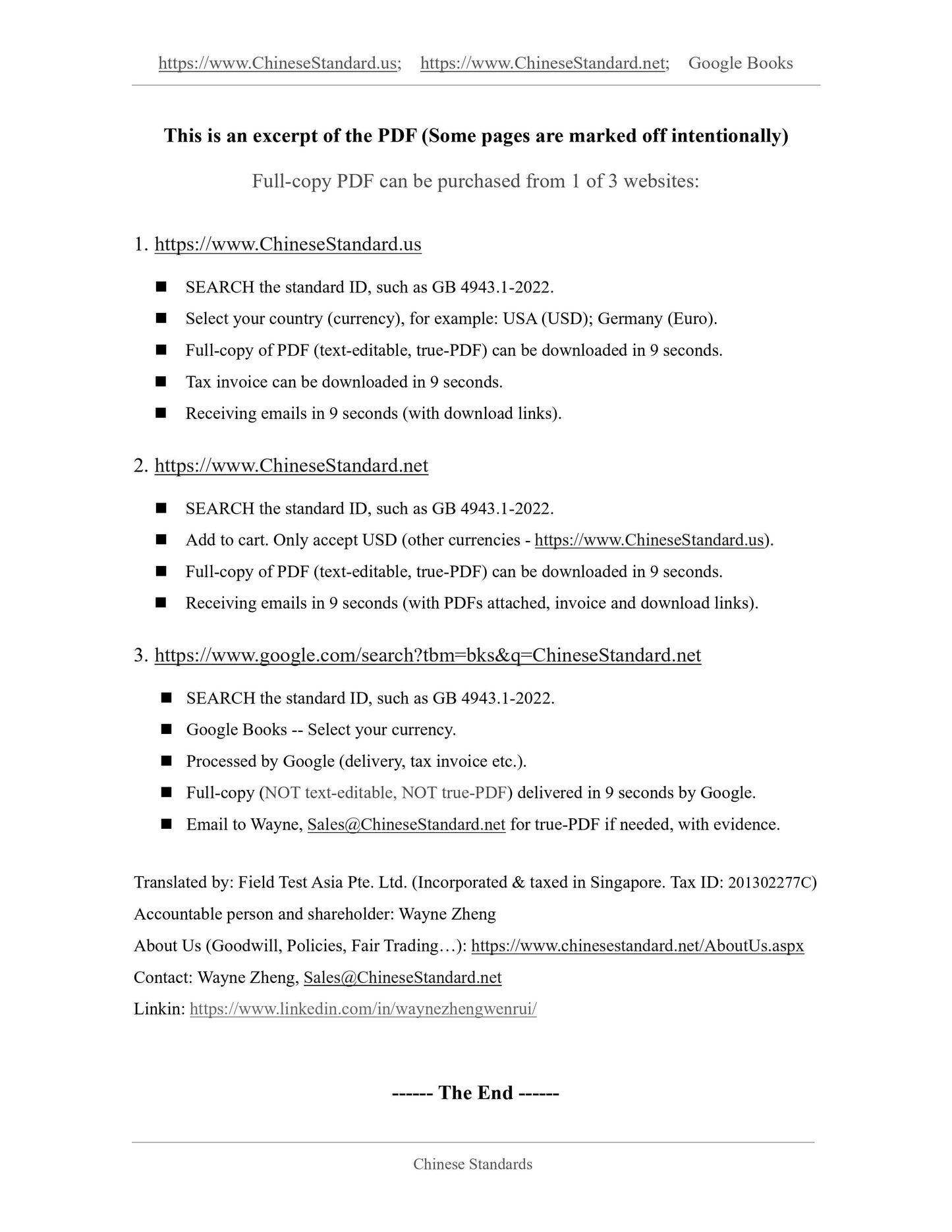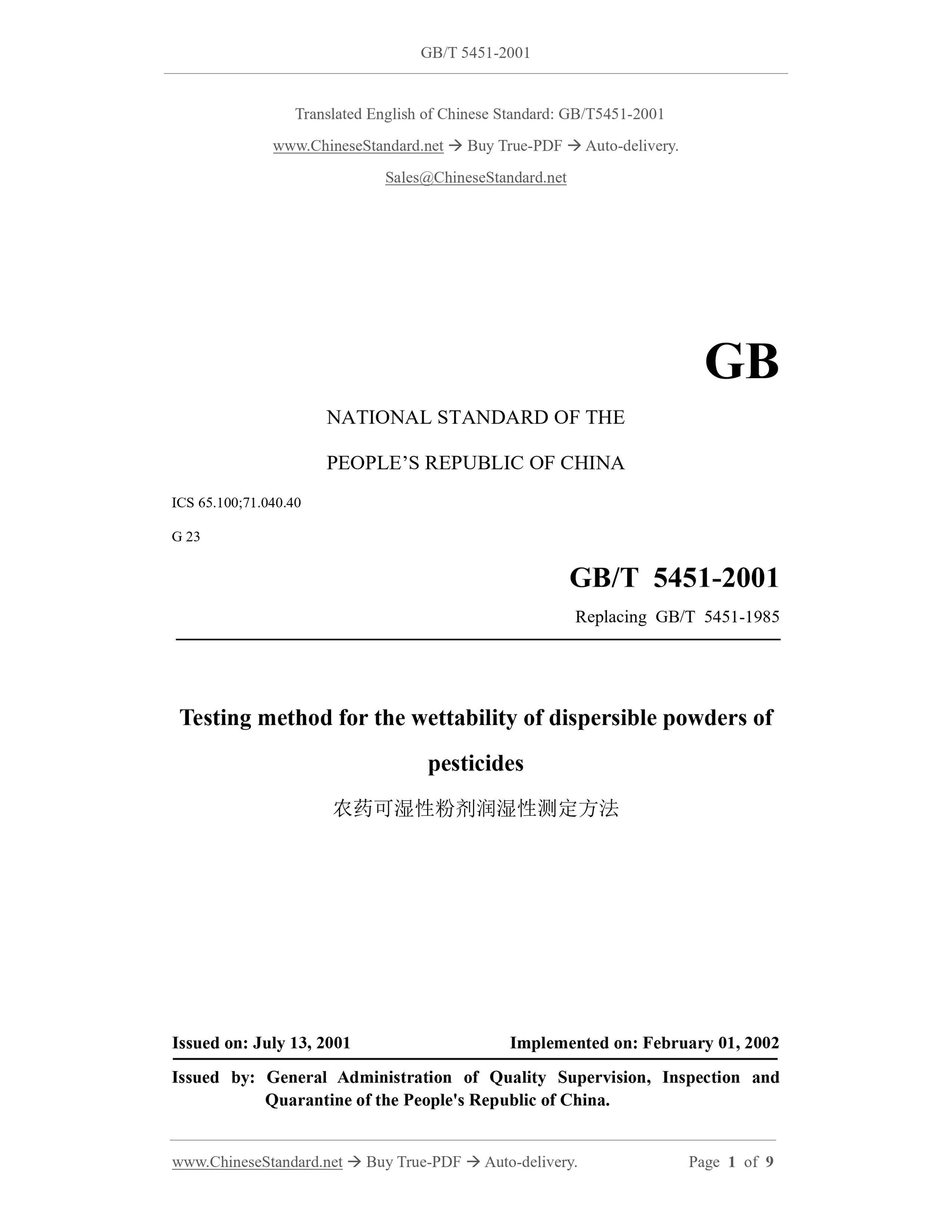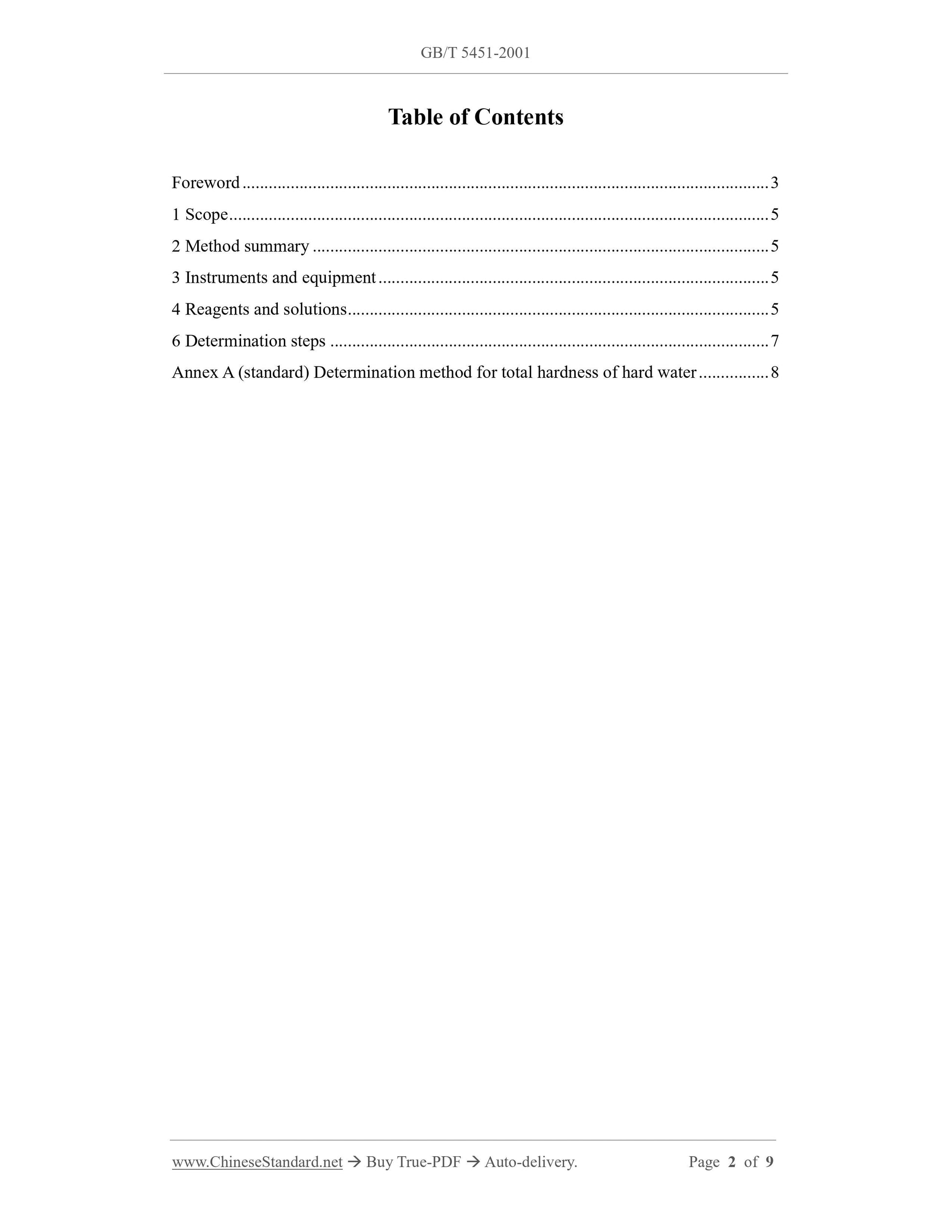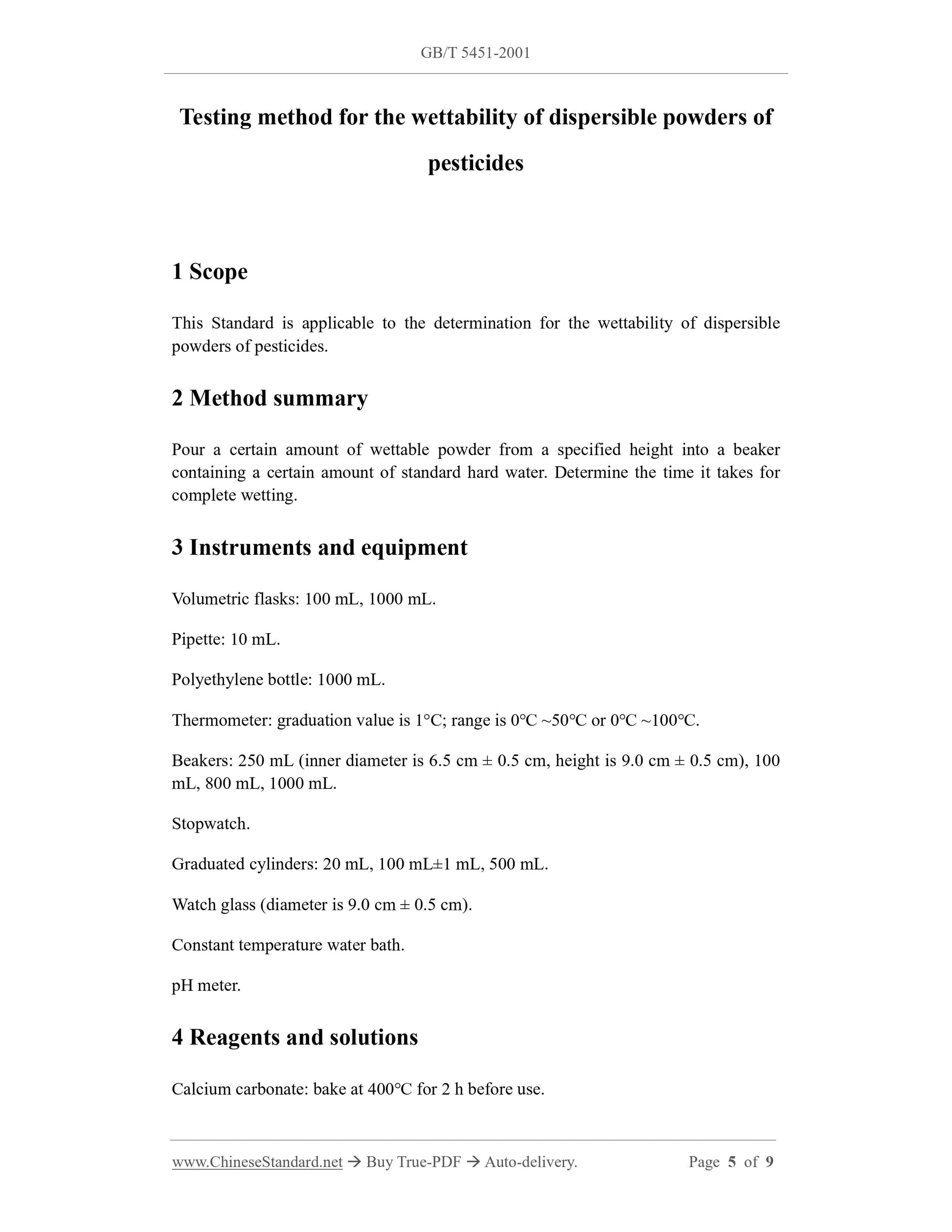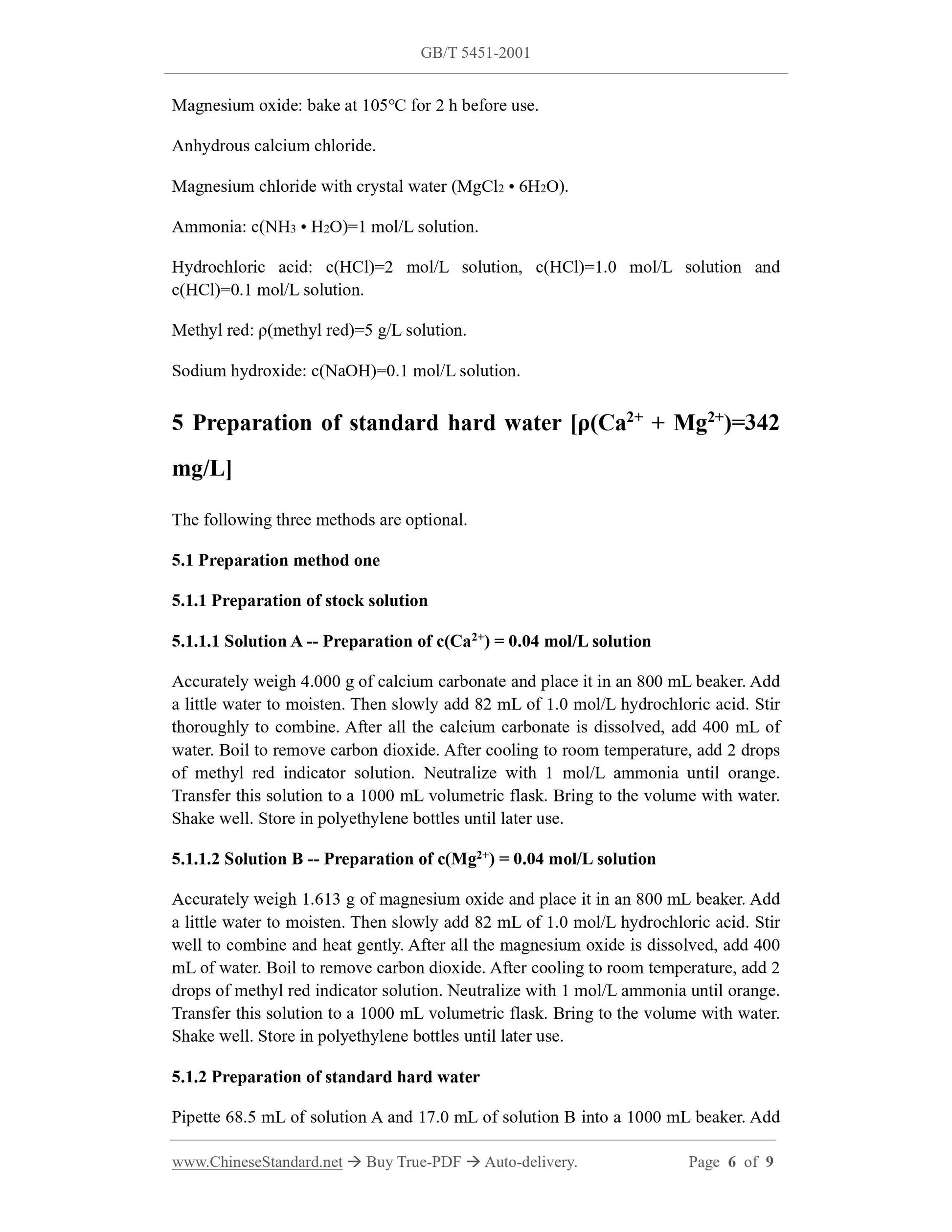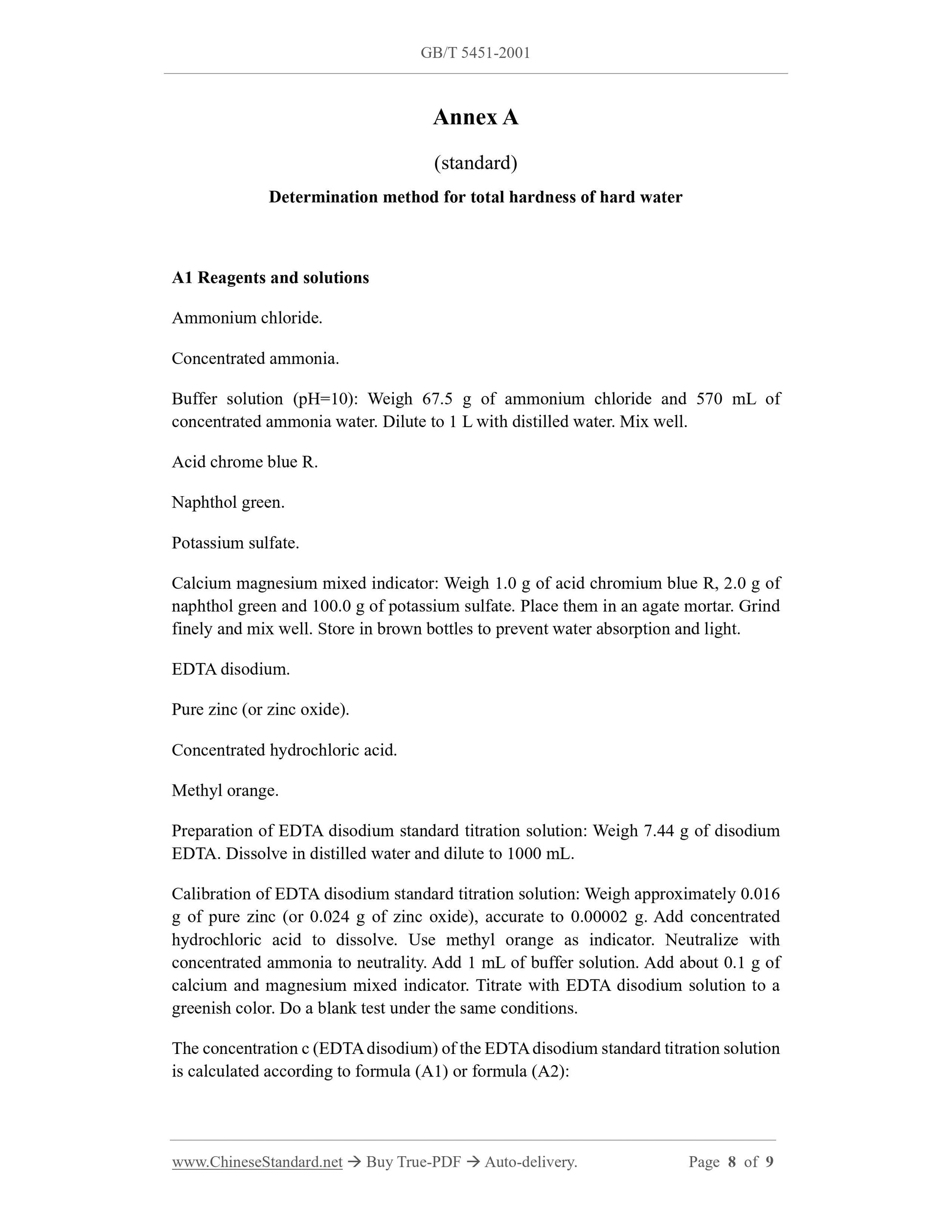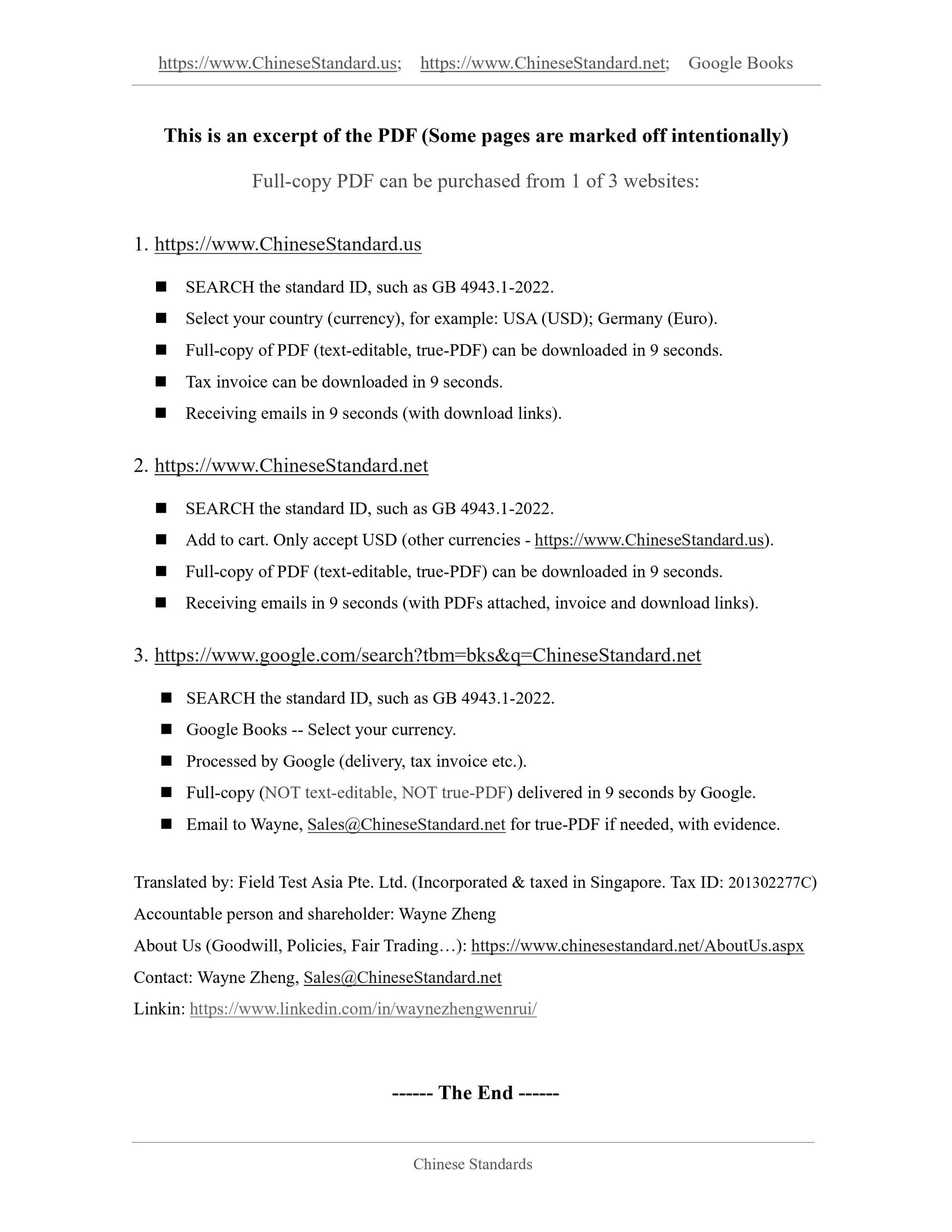1
/
of
6
www.ChineseStandard.us -- Field Test Asia Pte. Ltd.
GB/T 5451-2001 English PDF (GB/T5451-2001)
GB/T 5451-2001 English PDF (GB/T5451-2001)
Regular price
$95.00
Regular price
Sale price
$95.00
Unit price
/
per
Shipping calculated at checkout.
Couldn't load pickup availability
GB/T 5451-2001: Testing method for the wettability of dispersible powders of pesticides
Delivery: 9 seconds. Download (and Email) true-PDF + Invoice.Get Quotation: Click GB/T 5451-2001 (Self-service in 1-minute)
Newer / historical versions: GB/T 5451-2001
Preview True-PDF
Scope
This Standard is applicable to the determination for the wettability of dispersiblepowders of pesticides.
Basic Data
| Standard ID | GB/T 5451-2001 (GB/T5451-2001) |
| Description (Translated English) | Testing method for the wettability of dispersible powders of pesticides |
| Sector / Industry | National Standard (Recommended) |
| Classification of Chinese Standard | G23 |
| Classification of International Standard | 65.100; 71.040.40 |
| Word Count Estimation | 5,579 |
| Date of Issue | 2001-07-13 |
| Date of Implementation | 2002-02-01 |
| Older Standard (superseded by this standard) | GB/T 5451-1985 |
| Adopted Standard | CIPAC MT53.3; MOD |
| Issuing agency(ies) | General Administration of Quality Supervision, Inspection and Quarantine of the People Republic of China |
| Summary | This standard applies to: Pesticide WP wettability determination. |
Share
